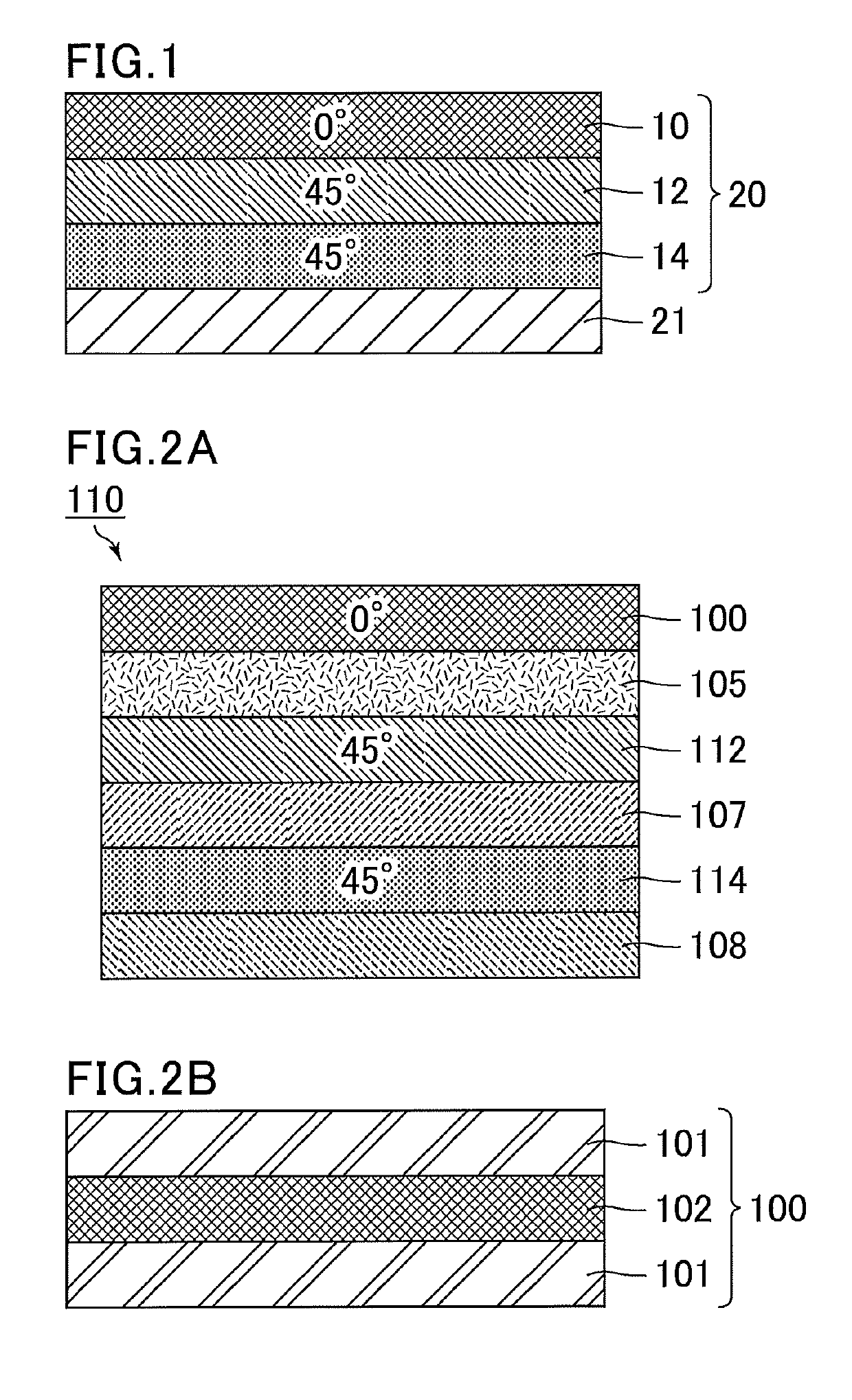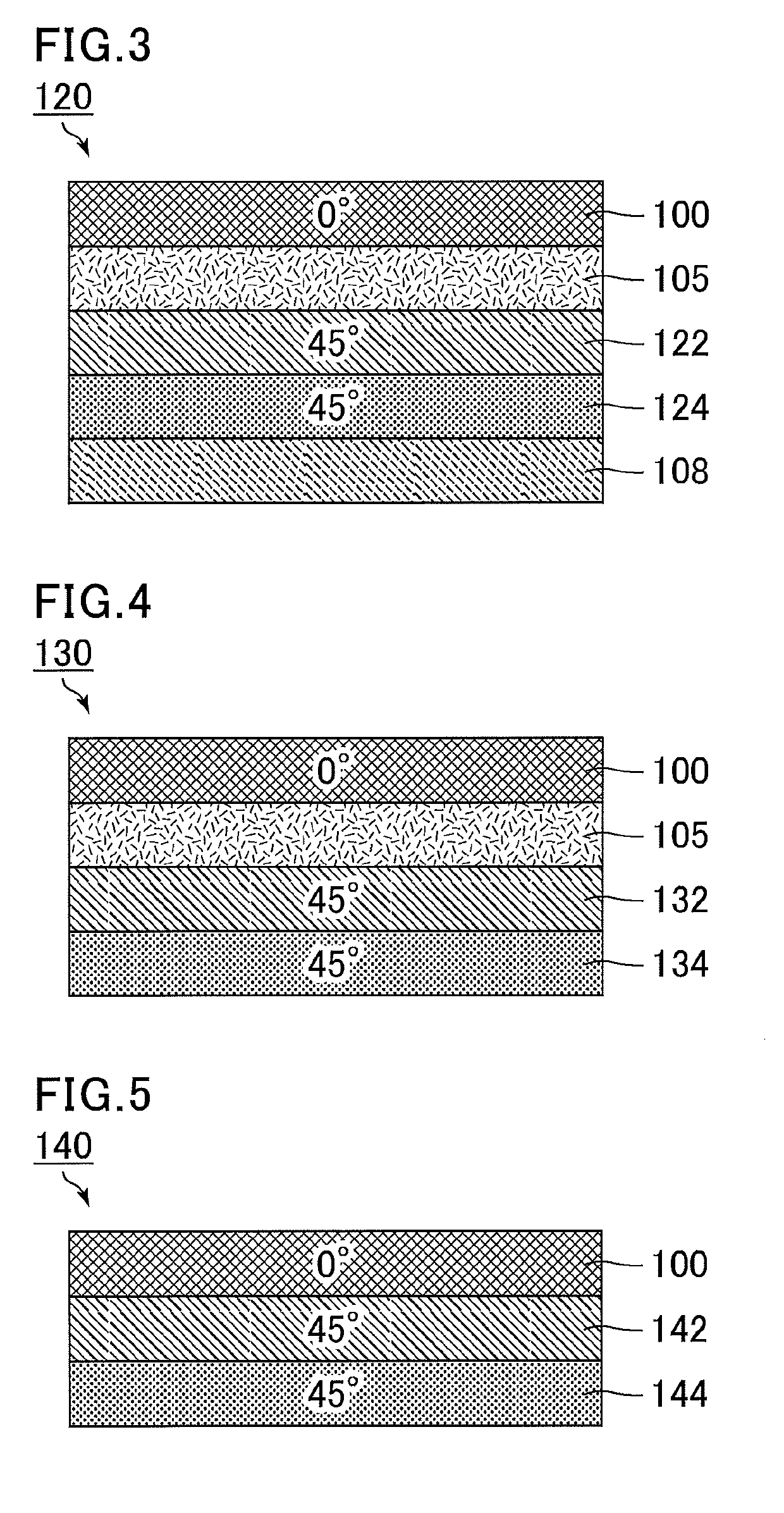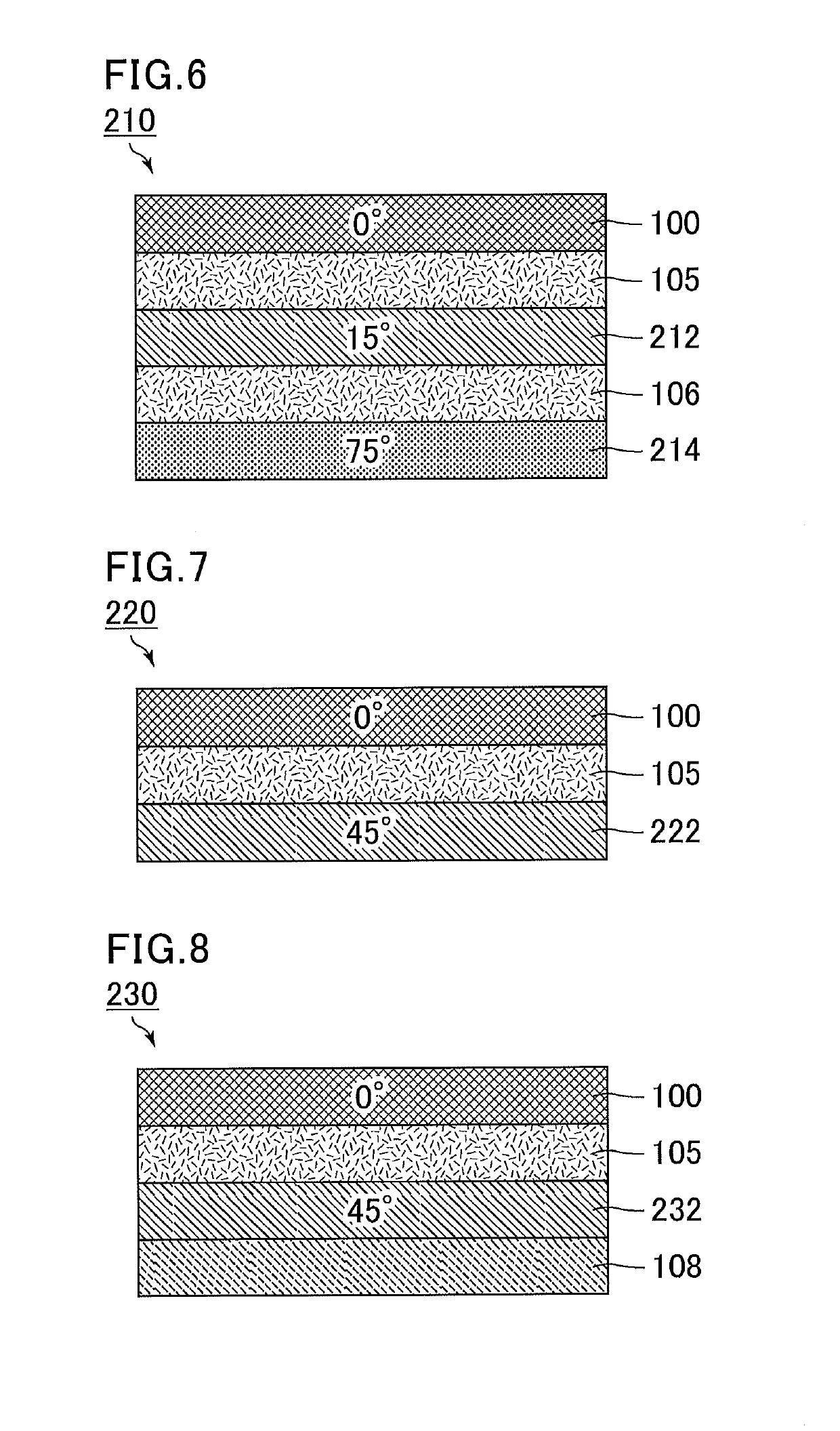Circularly polarizing plate, display device, and multilayer retarder
a technology of display devices and retarders, applied in the direction of polarizing elements, diodes, instruments, etc., can solve the problems of reducing the thickness of circularly polarizing plates, unable to achieve wide viewing angles, and significant internal reflection in display panels, so as to achieve wide range functionality and wide viewing angles
- Summary
- Abstract
- Description
- Claims
- Application Information
AI Technical Summary
Benefits of technology
Problems solved by technology
Method used
Image
Examples
example 1
[0089]FIG. 2A is a schematic cross-sectional view showing the structure of a circularly polarizing plate of Example 1, and FIG. 2B is a schematic cross-sectional view showing the structure of a polarizing plate in the circularly polarizing plate of Example 1. A circularly polarizing plate 110 of Example 1 includes a stack of a polarizing plate 100 having a thickness of 65 μm, an adhesive 105 having a thickness of 12 μm, a retardation layer (A) 112 having a thickness of 1 μm, an alignment film 107 having a thickness of 0.1 μm, a retardation layer (B) 114 having a thickness of 2 μm, and an alignment film 108 having a thickness of 0.1 μm. The circularly polarizing plate of Example 1 has a thickness of 80 μm.
[0090]The polarizing plate 100 includes a stack of a protective film (TAC film) 101 having a thickness of 25 μm, an iodine-impregnated PVA film (polyvinyl alcohol film impregnated with iodine) 102 having a thickness of 15 μm, and a protective film 101 having a thickness of 25 μm.
[00...
examples 2 to 4
[0098]The circularly polarizing plates of Examples 2 to 4 are the same as the circularly polarizing plate of Example 1, except that the retardation values of the retardation layer (A) 112 and the retardation layer (B) 114 are changed as shown in the following Table 1. The reverse wavelength dispersion performance can be adjusted by changing the retardation values of the retardation layer (A) 112 and the retardation layer (B) 114.
example 5
[0099]FIG. 3 is a schematic cross-sectional view showing the structure of a circularly polarizing plate of Example 5. A circularly polarizing plate 120 of Example 5 includes a stack of the polarizing plate 100 having a thickness of 65 μm, the adhesive 105 having a thickness of 12 μm, a retardation layer (A) 122 having a thickness of 1 μm, a retardation layer (B) 124 having a thickness of 2 μm, and the alignment film 108 having a thickness of 0.1 μm. The circularly polarizing plate of Example 5 has a thickness of 80 μm.
[0100]The optical characteristics of the circularly polarizing plate of Example 5 depend on the polarizing plate 100, the retardation layer (A) 122, and the retardation layer (B) 124. The retardation layer (A) 122 is a negative λ / 4 plate showing normal wavelength dispersion. The retardation layer (B) 124 is a positive λ / 2 plate showing normal wavelength dispersion. The retardation characteristics of the retardation layer (A) 122 and the retardation layer (B) 124 are sh...
PUM
| Property | Measurement | Unit |
|---|---|---|
| wavelength | aaaaa | aaaaa |
| wavelength | aaaaa | aaaaa |
| wavelength | aaaaa | aaaaa |
Abstract
Description
Claims
Application Information
 Login to View More
Login to View More - R&D
- Intellectual Property
- Life Sciences
- Materials
- Tech Scout
- Unparalleled Data Quality
- Higher Quality Content
- 60% Fewer Hallucinations
Browse by: Latest US Patents, China's latest patents, Technical Efficacy Thesaurus, Application Domain, Technology Topic, Popular Technical Reports.
© 2025 PatSnap. All rights reserved.Legal|Privacy policy|Modern Slavery Act Transparency Statement|Sitemap|About US| Contact US: help@patsnap.com



